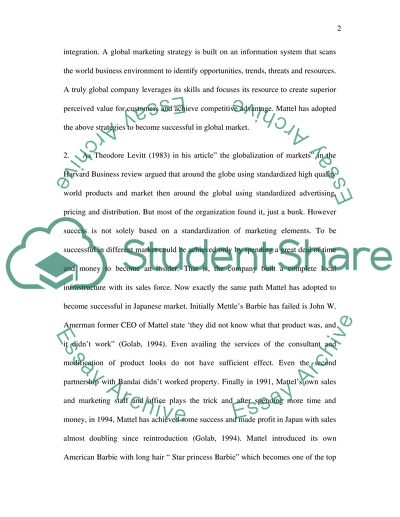Cite this document
(Cross-Cultural Administration,Mattel Inc Fall Essay Example | Topics and Well Written Essays - 2000 words, n.d.)
Cross-Cultural Administration,Mattel Inc Fall Essay Example | Topics and Well Written Essays - 2000 words. https://studentshare.org/marketing/1526563-cross-cultural-management-case-study-1500words-exc-referencingbibliography
Cross-Cultural Administration,Mattel Inc Fall Essay Example | Topics and Well Written Essays - 2000 words. https://studentshare.org/marketing/1526563-cross-cultural-management-case-study-1500words-exc-referencingbibliography
(Cross-Cultural Administration,Mattel Inc Fall Essay Example | Topics and Well Written Essays - 2000 Words)
Cross-Cultural Administration,Mattel Inc Fall Essay Example | Topics and Well Written Essays - 2000 Words. https://studentshare.org/marketing/1526563-cross-cultural-management-case-study-1500words-exc-referencingbibliography.
Cross-Cultural Administration,Mattel Inc Fall Essay Example | Topics and Well Written Essays - 2000 Words. https://studentshare.org/marketing/1526563-cross-cultural-management-case-study-1500words-exc-referencingbibliography.
“Cross-Cultural Administration,Mattel Inc Fall Essay Example | Topics and Well Written Essays - 2000 Words”. https://studentshare.org/marketing/1526563-cross-cultural-management-case-study-1500words-exc-referencingbibliography.


